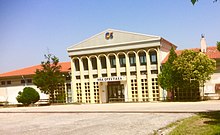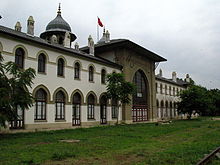Railway İstanbul Sirkeci – Swilengrad
| İstanbul Sirkeci – Swilengrad | |||||||||||||||||||||||||||||||||||||||||||||||||||||||||||||||||||||||||||||||||||||||||||||||||||||||||||||||||||||||||||||||||||||||||||||||||||||||||||||||||||||||||||||||||||||||||||||||||||||||||||||||||||||||||||||||||||||||||||||||||||||||||||||||||||||||||||||||||||||||||||||||||||||||||||||||||||||||||||||||||||||||||||||||||||||||||||||||||||||||||||||||||||||||||||||||||||||||||||||||||||||||||||||||||||||||||||||||||||||||||||||||||||||||||||||
|---|---|---|---|---|---|---|---|---|---|---|---|---|---|---|---|---|---|---|---|---|---|---|---|---|---|---|---|---|---|---|---|---|---|---|---|---|---|---|---|---|---|---|---|---|---|---|---|---|---|---|---|---|---|---|---|---|---|---|---|---|---|---|---|---|---|---|---|---|---|---|---|---|---|---|---|---|---|---|---|---|---|---|---|---|---|---|---|---|---|---|---|---|---|---|---|---|---|---|---|---|---|---|---|---|---|---|---|---|---|---|---|---|---|---|---|---|---|---|---|---|---|---|---|---|---|---|---|---|---|---|---|---|---|---|---|---|---|---|---|---|---|---|---|---|---|---|---|---|---|---|---|---|---|---|---|---|---|---|---|---|---|---|---|---|---|---|---|---|---|---|---|---|---|---|---|---|---|---|---|---|---|---|---|---|---|---|---|---|---|---|---|---|---|---|---|---|---|---|---|---|---|---|---|---|---|---|---|---|---|---|---|---|---|---|---|---|---|---|---|---|---|---|---|---|---|---|---|---|---|---|---|---|---|---|---|---|---|---|---|---|---|---|---|---|---|---|---|---|---|---|---|---|---|---|---|---|---|---|---|---|---|---|---|---|---|---|---|---|---|---|---|---|---|---|---|---|---|---|---|---|---|---|---|---|---|---|---|---|---|---|---|---|---|---|---|---|---|---|---|---|---|---|---|---|---|---|---|---|---|---|---|---|---|---|---|---|---|---|---|---|---|---|---|---|---|---|---|---|---|---|---|---|---|---|---|---|---|---|---|---|---|---|---|---|---|---|---|---|---|---|---|---|---|---|---|---|---|---|---|---|---|---|---|---|---|---|---|---|---|---|---|---|---|---|---|---|---|---|---|---|---|---|---|---|---|---|---|---|---|---|---|---|---|---|---|---|---|---|---|---|---|---|---|---|---|---|---|---|---|---|---|---|---|---|---|---|---|---|---|---|---|---|---|---|---|---|---|---|---|---|---|---|---|---|---|---|---|---|---|---|---|---|---|---|---|---|---|---|---|---|---|---|---|---|---|---|---|---|---|---|---|
|
Istanbul Sirkeci Railway Station
| |||||||||||||||||||||||||||||||||||||||||||||||||||||||||||||||||||||||||||||||||||||||||||||||||||||||||||||||||||||||||||||||||||||||||||||||||||||||||||||||||||||||||||||||||||||||||||||||||||||||||||||||||||||||||||||||||||||||||||||||||||||||||||||||||||||||||||||||||||||||||||||||||||||||||||||||||||||||||||||||||||||||||||||||||||||||||||||||||||||||||||||||||||||||||||||||||||||||||||||||||||||||||||||||||||||||||||||||||||||||||||||||||||||||||||||
| Route length: | 323.5 km | ||||||||||||||||||||||||||||||||||||||||||||||||||||||||||||||||||||||||||||||||||||||||||||||||||||||||||||||||||||||||||||||||||||||||||||||||||||||||||||||||||||||||||||||||||||||||||||||||||||||||||||||||||||||||||||||||||||||||||||||||||||||||||||||||||||||||||||||||||||||||||||||||||||||||||||||||||||||||||||||||||||||||||||||||||||||||||||||||||||||||||||||||||||||||||||||||||||||||||||||||||||||||||||||||||||||||||||||||||||||||||||||||||||||||||||
| Gauge : | 1435 mm ( standard gauge ) | ||||||||||||||||||||||||||||||||||||||||||||||||||||||||||||||||||||||||||||||||||||||||||||||||||||||||||||||||||||||||||||||||||||||||||||||||||||||||||||||||||||||||||||||||||||||||||||||||||||||||||||||||||||||||||||||||||||||||||||||||||||||||||||||||||||||||||||||||||||||||||||||||||||||||||||||||||||||||||||||||||||||||||||||||||||||||||||||||||||||||||||||||||||||||||||||||||||||||||||||||||||||||||||||||||||||||||||||||||||||||||||||||||||||||||||
| Power system : | 25 kV 50 Hz ~ | ||||||||||||||||||||||||||||||||||||||||||||||||||||||||||||||||||||||||||||||||||||||||||||||||||||||||||||||||||||||||||||||||||||||||||||||||||||||||||||||||||||||||||||||||||||||||||||||||||||||||||||||||||||||||||||||||||||||||||||||||||||||||||||||||||||||||||||||||||||||||||||||||||||||||||||||||||||||||||||||||||||||||||||||||||||||||||||||||||||||||||||||||||||||||||||||||||||||||||||||||||||||||||||||||||||||||||||||||||||||||||||||||||||||||||||
|
|||||||||||||||||||||||||||||||||||||||||||||||||||||||||||||||||||||||||||||||||||||||||||||||||||||||||||||||||||||||||||||||||||||||||||||||||||||||||||||||||||||||||||||||||||||||||||||||||||||||||||||||||||||||||||||||||||||||||||||||||||||||||||||||||||||||||||||||||||||||||||||||||||||||||||||||||||||||||||||||||||||||||||||||||||||||||||||||||||||||||||||||||||||||||||||||||||||||||||||||||||||||||||||||||||||||||||||||||||||||||||||||||||||||||||||
The İstanbul Sirkeci – Swilengrad railway connects Istanbul , the largest city in Turkey , with the Bulgarian border station Swilengrad . The TCDD main line, which opened between 1871 and 1874 and has been fully electrified since 1994, is located in the European part of Turkey. Since 2018, it has been connected to the TCDD network in the Asian part of Turkey via the Marmaray Tunnel .
history
prehistory
The Crimean War (1853-1856) had shown that an improved transport route between Central and Western Europe on the one hand and the Ottoman Empire on the other was politically necessary. However, the areas to be crossed southeast of Hungary were economically weak and did not promise much traffic. Several attempts were necessary until 1869 to organize the financing of the project. On April 17, 1869, the concession for the "Rumeli Railway" was taken over by the Compagnie des Chemins de fer Orientaux (Orient Railway) from Baron Maurice de Hirsch . This provided for a route from Constantinople , as Istanbul was usually called at the time, via Edirne , Sofia , Niš , Sarajevo and Banja Luka to the Austro-Hungarian border near Doberlin and was part of a whole package of concessions for routes in European Turkey.
construction

Construction began with the first 16 km from Yeşilköy (then a suburb of Istanbul) to Küçükçekmece . It was started on June 4, 1870 and opened on January 4, 1871. An extension of the route to the historical and at that time also the economic and political center of Istanbul, to Eminönü , was necessary, but difficult to achieve due to the narrow buildings. Finally, Sultan Abdülaziz allowed the route to be laid along the coastline of the Marmara Sea and in a 180-degree soil around the gardens of the Topkapı Palace in Sirkeci, which is adjacent to Eminönü. This extension was put into operation on July 27, 1872 In 1873, the associated terminal station Sirkeci . Further sections were opened from 1872 to 1874.
In 1874 the line between Istanbul and Edirne was in continuous operation. However, the political situation worsened for the Ottoman Empire and in its European part in particular. Uprising in the Balkans led to the secession of Bosnia , Serbia and Bulgaria and in 1875 the state went bankrupt . The Berlin Congress in 1878 spoke out in favor of extending the railway to Austria.
Further development

In the wake of the First World War , Western Thrace was ceded to Greece . The border now ran in the Mariza (Greek Evros , Turkish Meriç ). From the bridge over the Mariza near Pythio to the Bulgarian border near Swilengrad , the route was now largely on Greek territory. However, the line crossed the border again for a few kilometers on Turkish territory to Edirne train station (train station: Edirne-Karagaç ). Then it led back across the border to Greece. The Orientbahn had to hand over the route between Pythio and Swilengrad to the Chemin de fer Franco-Hellenique (CFFH).
The remaining sections of the route in Turkey went to the TCDD in 1935 as part of the nationalization of the Orientbahn.
After the Second World War , the section between İstanbul Sirkeci and Halkalı was electrified in 1955 by the 50 Hz consortium with 50 Hz 25 KV AC voltage . Since then, suburban traffic in Istanbul has been operated electrically, with all long-distance trains changing locomotives in Halkalı. In 1993 the electrical operation was expanded from Halkalı to Çerkezköy , and in the following year to Kapıkule , the Turkish border station with Bulgaria. At a later point in time, the cross-border section to Swilengrad and beyond was electrified.
Political relations between Greece and Turkey have always been tense. It was not until 1971, however, before Turkey opened a direct route to Bulgaria and was no longer dependent on the old route, which had crossed the Greek-Turkish border three times since 1919 before a train reached Bulgaria. This new line also included Edirne with a new station located at a different location. Greece also built a new stretch of line between Dikaia and Nea Vyssa that avoids Turkish territory. The section of the old line via Edirne was closed .
The border crossing between Turkey and Greece near Pythio was used by two pairs of trains in scheduled passenger traffic until February 13, 2011: The Dostluk / Filia Express , a night train on the Thessaloniki –Istanbul – Thessaloniki connection that carried sleeping cars , and the daytime train Istanbul – Pythion –Istanbul, which in recent years consisted of just one car. Since then, cross-border rail traffic has been suspended here for economic reasons.
future
On February 28, 2019, the European Union and Turkey signed a contract to modernize the connection. For this, the European Union will provide 275 million euros to the total estimated project cost of 1 billion euros. The goal is a double-track line from Halkalı – Kapıkule designed for a maximum speed of 200 km / h . The sources indicate differently whether it is a new building or an expansion. Continuous dual track and equipment with ETCS Level 1 is planned . A total of seven stations will be modernized. The project is divided into three construction lots . First of all, the Çerkezköy – Kapıkule section is to be built. Here five train stations and 30 bridges are being renovated, two tunnels to be excavated and seven are being built using the open construction method. This should be completed by April 2022. Construction began in September 2019. The second construction lot between Çerkezköy and Ispartakule is the largest with a length of 155 km. It was awarded to an Italian- Turkish consortium . This partial order is worth 524 million euros.
business
Scheduled operation
On August 12, 1888, the Orient Express began its continuous operation between Paris and Istanbul.
Due to renovation work, there has been no scheduled traffic between İstanbul Sirkeci and Halkalı since March 2019 .
Incidents
- On October 20, 1957, the Simplon Orient Express traveling westwards and an oncoming local train collided head-on between the Yarımburgaz and İspartakule stations. 95 people died in the accident and another 150 were injured.
- On July 8, 2018, a train derailed near Sarılar because the track was undermined after heavy rainfall. 24 people died and 318 were also injured.
literature
- Railway Atlas Greece . Schweers & Wall, Cologne 2018. ISBN 978-3-89494-148-2
- Neil Robinson: World Rail Atlas . Vol. 8: The Middle East and Caucasus . 2006. ISBN 954-12-0128-8
Remarks
- ↑ In brackets the kilometers of the Orientbahn ( Railway Atlas Greece , p. 23).
- ↑ Rumelia was the name for the part of the Ottoman Empire in Europe.
- ↑ Not identical and not to be confused with today's Edirne and Edirne Sehir train stations .
Individual evidence
- ↑ Information from: Robinson, Pl. 1–3; Railway Atlas Greece , p. 23
- ↑ Robinson, p. 47.
- ↑ Robinson, p. 55.
- ↑ Robinson, p. 52.
- ↑ Robinson, pp. 52, 53.
- ↑ Robinson, p. 54.
- ↑ Robinson, p. 48.
- ↑ Robinson, p. 49, plate 1.
- ↑ Robinson, p. 49.
- ↑ Robinson, pp. 53f.
- ↑ Robinson, pp. 51, 53, 54.
- ^ Railway Atlas Greece , p. 23.
- ↑ Robinson, p. 54, plate 1.
- ^ Railway Atlas Greece , p. 23.
- ↑ timetable for connections to Europe of TCDD , accessed on 15 April, 2007.
- ^ So: Railway Gazette International cited in: HaRakevet 125 (June 2019), p. 22.
- ↑ So: bac: From 2023 on two tracks faster to Istanbul . In: Eisenbahn-Revue International 12/2009, p. 641.
- ↑ bac: From 2023 on two tracks faster to Istanbul . In: Eisenbahn-Revue International 12/2009, p. 641.
- ^ Railway Gazette International cited in: HaRakevet 125 (June 2019), p. 22.
- ↑ Work starts to rebuild Istanbul - Bulgaria main line in: Railway Gazette, September 27, 2019
- ↑ bac: From 2023 on two tracks faster to Istanbul . In: Eisenbahn-Revue International 12/2009, p. 641.
- ↑ Werner Sölch: Orient Express. The heyday and decline of a luxury train. 4th edition, Alba Verlag, Düsseldorf 1998, p. 13 ff.




